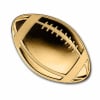Welcome to the Hardcore Husky Forums. Folks who are well-known in Cyberland and not that dumb.
Its not over

RaceBannon
Member, Moderator, Swaye's Wigwam Posts: 116,198 
in Tug Tavern
Comments
-
Yeah. It is.
The capitalization of AIN'T was almost enough to change the result, but not quite. -
athletic director vote of confidence?
-
the Indiana high Class don’t speak that way?
-
-
A legal enema is being prepared. It could get messy.
-
-
He's rolling.YellowSnow said:
-
Like Trump cares about trading in for a new model.oregonblitzkrieg said:
He's bounced Ivana and Marla before. Melania is just a depreciable asset.
-
-
Pence’s words seem hollow. But who knows if those other tweets are real or China propaganda












 https://www.youtube.com/watch?v=tG25f13s2JA
https://www.youtube.com/watch?v=tG25f13s2JA